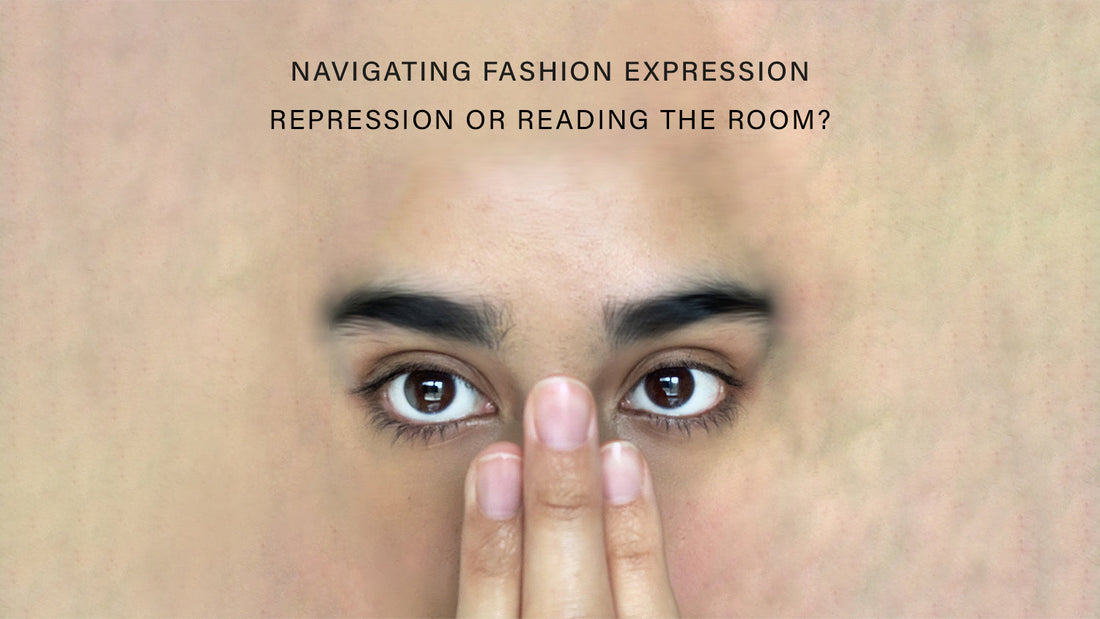
Navigating Fashion Expression: Repression or Reading the Room?
Share
Exploring the fine line between repression and reading the room.
I remember being berated for the smallest adjustments, whether it was how I wore a shirt or dip-dyeing my trousers to add some character to my outfits. In my early 20s, stepping out of my comfort zone felt challenging because others had drawn a circle around me, limiting my ability to experiment. Finding my personal style became a challenge, and the restrictions even led to creative blocks when designing my own collections.
The constant messaging throughout my life was clear: expression and experimentation would not be tolerated. I carried that with me for a long time, struggling to find clarity in something as blurred and subjective as
fashion. That’s why I decided to write this short blog on what can sometimes feel like a tight rope line between repression and reading the room.
Reading the Room
When people express themselves in ways that go against universally accepted principles, it can immediately raise concerns. However, misunderstanding the phrase “read the room” can lead to expressions that feel out of place or disconnected from their surroundings. This can extend further into offending or making others uncomfortable simply by appearance. But is this always a clear-cut issue, or is there a grey area? Context and different perspectives often determines multiple answers.
Repression
At times, self-expression is actively suppressed whether due to external pressures, professional expectations, or the fear of losing one’s livelihood. When the freedom to express through
fashion is threatened, it’s no longer just about clothing; it becomes a form of repression. What’s disheartening is that fashion, in most cases, is entirely harmless yet those who stray from the norm often face real consequences. This stunts the journey to confidently and authentically expressing oneself.
The Grey Area
Then, there’s the in-between the grey area where the lines blur. Many struggle to navigate this space, balancing authenticity with the influence of social and cultural expectations.
As social beings, we crave authenticity but also seek acceptance.People want to be authentic, but they also want to be understood, not rejected at first sight. Society often resists what it doesn’t understand, hesitant to challenge long-held beliefs. Some argue that intention matters more than the clothes themselves, but in reality, fashion can communicate identity or not leading to judgments either way.
It’s human nature to be skeptical, especially when faced with something unfamiliar. The ability to deceive makes people hesitant to accept another’s choices at face value.
Whether someone fully embraces their aesthetic or feels torn between social norms and personal style, the key is to find a way to channel authentic expression.
This blog is from Sana Marks, a bags and accessories brand that merges 3D technology with fashion.



